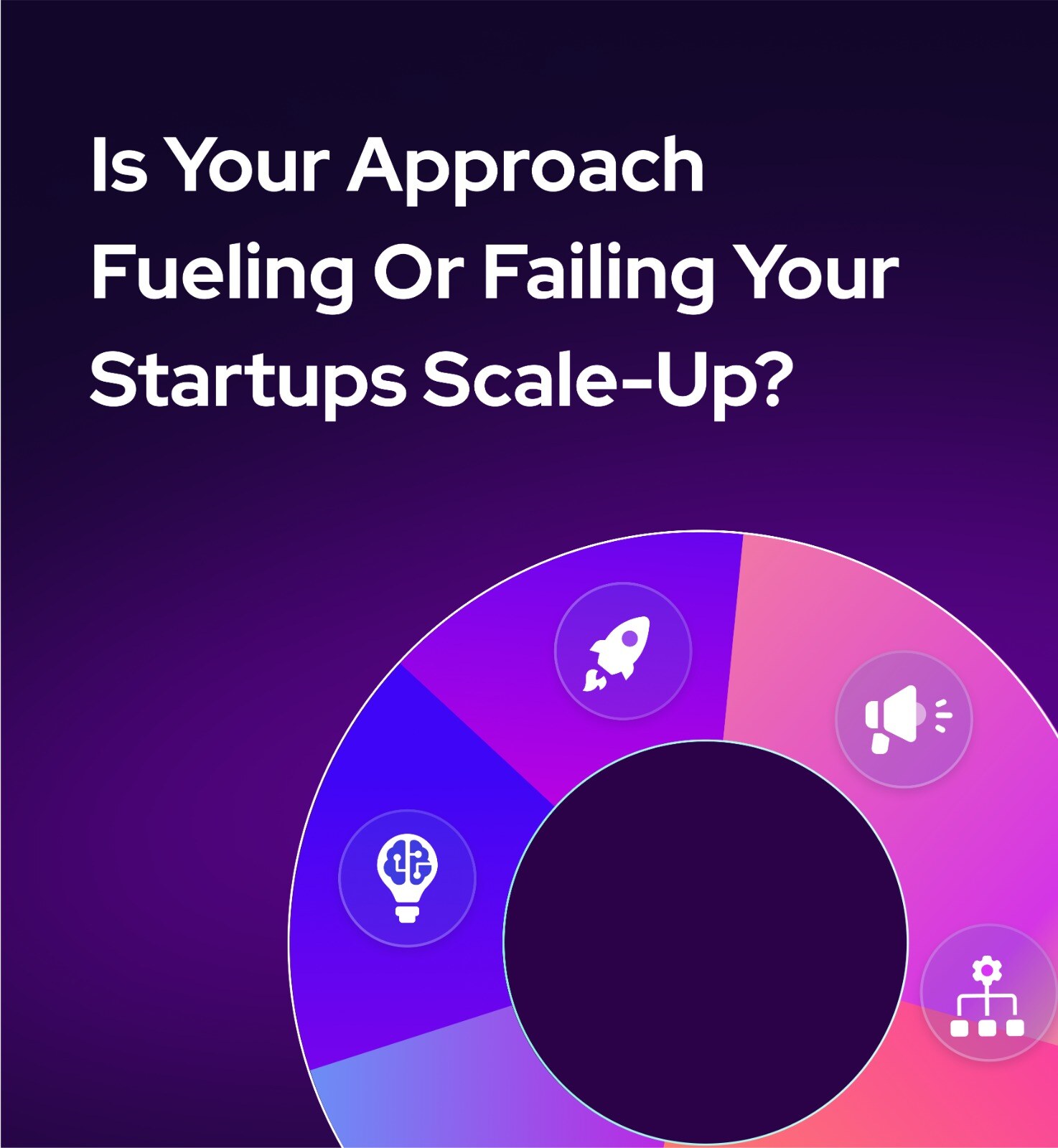Startup Founder Burnout: 5 Crucial Mistakes They Do
In the fast-paced world of startups, the path to success is often paved with sleepless nights, endless coffee runs, and an unwavering commitment to turning dreams into reality. However, this relentless pursuit of growth can come at a steep price: startup founder burnout.
As the driving force behind their companies, founders often find themselves caught in a vicious cycle of overwork and stress, unknowingly sabotaging the very thing they've set out to build – a sustainable, thriving business.
The startup ecosystem is rife with stories of visionary entrepreneurs who've burned the candle at both ends, only to find themselves exhausted, disillusioned, and on the brink of throwing in the towel. But what if we told you that the key to avoiding startup founder burnout lies not in working harder, but in working smarter?
In this article, we'll explore five critical mistakes that founders make when building their startups, and how these missteps can lead to burnout and hinder long-term success.
Startup Founder Burnout Mistakes
- Neglecting to Create Value Streams with Dedicated Leadership
One of the most common pitfalls that lead to startup founder burnout is the failure to establish clear value streams within the organization. Value streams are the processes that deliver value to customers, and without proper management, they can become a source of chaos and inefficiency.
Many founders fall into the trap of trying to oversee every aspect of their business personally. While this hands-on approach might work in the early stages, it quickly becomes unsustainable as the company grows. The result? A founder stretched thin, unable to focus on strategic decisions, and ultimately burning out.
The solution lies in creating distinct value streams, each with its own dedicated leader. By doing so, founders can:
- Delegate responsibilities effectively
- Ensure each area of the business receives focused attention
- Free up time to concentrate on high-level strategy and vision
Implementing this structure allows founders to step back from day-to-day operations and focus on steering the ship, rather than rowing it. This shift not only prevents burnout but also fosters a more scalable and efficient organization.
- Failing to Align Strategic Objectives with the Company Vision
Another critical mistake that contributes to startup founder burnout is the lack of alignment between strategic objectives and the overall company vision. When founders and their teams are pulling in different directions, it creates friction, wastes resources, and leads to frustration and exhaustion.
To combat this, founders should work closely with the heads of each value stream to create strategic objectives that directly support the company's vision. This process involves:
- Clearly communicating the company's long-term vision to all team members
- Collaboratively setting SMART (Specific, Measurable, Achievable, Relevant, Time-bound) objectives for each value stream
- Regularly reviewing and adjusting these objectives to ensure continued alignment
By establishing this connection between vision and action, founders create a sense of purpose and direction for their teams. This alignment reduces the need for constant intervention and micromanagement, allowing founders to focus on big-picture thinking and avoiding the burnout that comes from getting bogged down in operational details.
- Ignoring Organizational Impediments
As startups grow, they inevitably encounter obstacles that hinder progress and efficiency. These organizational impediments can range from communication breakdowns to inefficient processes or resource constraints. When left unaddressed, these issues compound, creating a never-ending cycle of firefighting that quickly leads to startup founder burnout.
A proactive approach to identifying and removing these impediments is crucial for maintaining a healthy, sustainable startup. One effective method is implementing an organizational impediment board. This visual management tool allows teams to:
- Identify and prioritize obstacles affecting the company's performance
- Track progress on resolving these issues
- Foster a culture of continuous improvement
For instance, a startup might use a Kanban-style board with columns for "Identified," "In Progress," and "Resolved" impediments. Regular meetings to review and update the board ensure that issues are addressed systematically rather than allowed to fester and drain energy from the founder and the team.
By creating a systematic way to tackle organizational challenges, founders can prevent the accumulation of small problems that lead to major stress and burnout over time.
- Underestimating the Power of Knowledge Sharing
In the early stages of a startup, knowledge often resides primarily with the founder. As the company grows, this centralization of information becomes a bottleneck, leading to founder burnout as they become the go-to person for every decision and piece of information.
Implementing robust knowledge-sharing practices, such as communities of practice (CoPs), can alleviate this burden. CoPs are groups of people who share a concern or passion for something they do and learn how to do it better as they interact regularly.
Benefits of establishing communities of practice include:
- Distributing knowledge across the organization
- Fostering innovation through cross-functional collaboration
- Reducing dependency on any single individual, including the founder
For example, a startup might create CoPs for areas like engineering best practices, customer service excellence, or market research methodologies. These groups would meet regularly to share insights, solve problems, and develop best practices that can be disseminated throughout the organization.
By fostering a culture of knowledge sharing, founders can ensure that their expertise is spread throughout the company, reducing their workload and the potential for burnout.
- Overlooking Customer-Centric Product Development
Many founders fall into the trap of developing products based on their own assumptions rather than real customer needs. This approach often leads to wasted resources, market misalignment, and the stress of trying to force-fit a product into the market – all major contributors to startup founder burnout.
Implementing design sprints is an effective way to create new features with direct customer input. Design sprints are time-constrained, five-phase processes used to answer critical business questions through design, prototyping, and testing ideas with customers.
The benefits of using design sprints include:
- Rapid validation of product ideas
- Increased customer satisfaction and product-market fit
- Reduced risk of developing unwanted features
For instance, a startup could run a week-long design sprint to conceptualize and prototype a new feature. By the end of the week, they would have tested the prototype with real users, gaining valuable insights before committing significant resources to development.
This approach not only leads to better products but also alleviates the pressure on founders to have all the answers. By involving customers in the development process, founders can make more confident decisions and avoid the burnout that comes from constantly second-guessing product direction.
Conclusion
Startup founder burnout is a real and pressing issue in the entrepreneurial world. However, by addressing these five critical areas – creating value streams with dedicated leadership, aligning strategic objectives with the company vision, systematically removing organizational impediments, implementing knowledge sharing practices, and embracing customer-centric product development – founders can build more sustainable, resilient companies.
These practices collectively create a product governance model that allows founders to focus on the strategy and vision of the company, rather than getting bogged down in day-to-day implementation. By delegating effectively, fostering alignment, addressing challenges systematically, spreading knowledge, and staying close to customer needs, founders can create an environment where both they and their startups can thrive in the long term.
Are you a founder of a digital product company generating at least 6 figures and want to build the next unicorn? Then the Scale Up Methodology is for you. By implementing these sustainable practices, you'll not only avoid burnout but also set your startup on a path to scalable, long-term success. The Scale Up Methodology provides a framework for implementing these crucial elements, helping you transform your startup into a well-oiled machine primed for exponential growth.
Disclaimer
This blog post was initially generated using Inno Venture AI, an advanced artificial intelligence engine designed to support digital product development processes. Our internal team has subsequently reviewed and refined the content to ensure accuracy, relevance, and alignment with our company's expertise.
Inno Venture AI is a cutting-edge AI solution that enhances various aspects of the product development lifecycle, including intelligent assistance, predictive analytics, process optimization, and strategic planning support. It is specifically tailored to work with key methodologies such as ADAPT Methodology® and Scaleup Methodology, making it a valuable tool for startups and established companies alike.
Inno Venture AI is currently in development and will soon be available to the public. It will offer features such as intelligent product dashboards, AI-enhanced road mapping, smart task prioritization, and automated reporting and insights. If you're interested in being among the first to access this powerful AI engine, you can register your interest at https://innoventure.ai/.

Take The Test
You May Also Like
These Related Stories

Cost Management in Scaling Startups: Mastering Lean Budgeting

Mastering the Digital Marketing Funnel

